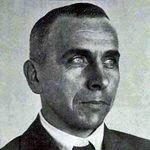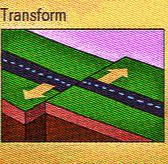Hello everybody welcome to verryonel . Today I am going to discuss with you a very interesting and mind-blowing topic that is 'Theory of Plate tectonics '. Don't think that this is a very boring topic but if you understood the topic you would have an interest to know more about it. ' The theory of plate tectonics' is a mixture of history and geography of our earth. This plate tectonic theory explains the historical state of earth as well as it's geography. We will discuss the most important things related to the theory of plate tectonics in the simplest way.
As a living being on our amazing planet earth we should also have to know about it.
So Let's Explore .
We are living on the earth from many years and we also see many natural structures and phenomenon around ourselves such as - mountains, rivers , valleys, volcanoes, earthquake, tsunami etc. Did you ever ask a question that how do these structures were formed & these natural phenomenon occur ? Today you will know the answer.
' The theory of plate tectonics' explains that our earth is made of 3 prominent layers
i) crust (uppermost layer of the earth)
ii)mantle (below the crust)
iii) core (the middle of the earth)
So in this theory of plate tectonics it is explained that earth's uppermost layer that is the crust is made up of 7 major and some minor plates / landmasses . These plates are called "Techtonic Plates" . This theory of plate tectonics was developed between 1950s-1970s . This theory was first proposed by a German researcher Alfred Wegener . This theory later solved many geographical problems earlier faced by geologist.
Alfred Wegener .
To understand this plate tectonic theory we have to understand another theory that is Continental Drift . This continental drift theory is majorly related & connected with the plate tectonic theory.
Continental Drift
The continental drift theory explains that how the continents formed due to their motion & what is the shape of continents and oceans from millions of years ago . It was also first described by Alfred Wegener in 1912 . We will discuss all the things happened but we will understand it periodically.
1)Permian Period
About 225 million years ago the earth looked so different from we see it in our present day. At that time there was only one huge landmass present . This is called as supercontinent its other name which is given by Alfred Wegener is Pangea . Pangea was the mixture of all landmasses of our earth and later due to natural activities this Pangea was broken into numbers of landmasses and with due course of time their shape become normal like today's world . Except Pangea which was the only landmass at that time, there were water all around the earth . This great ocean came to be known as Panthelasa . Thus this period of earth when it have only one landmass Pangea and a great and huge ocean Panthelasa is called Permian period ..
2)Triassic Period -200 million years ago
After many years the Pangea began to breakup. So why did it breakup? As we know that the force of gravity is more at the poles than equator of the earth, the Pangea landmass divided into 2 broad landmasses . From these landmasses one went towards the north and other went towards the south , forming 2 landmasses known as
1)Angara /Laurasia - which was the northern part.
2) Gondwana land - which was the southern part.
This division also led to the formation of a small sea which was also a part of panthelasa , the name of the ocean is "Thethis Sea ".
According to this theory the
Angara land consist of today's - North America , Europe, Russia & China .
The Gondwanaland consist of today's - South America, Africa, India , Australia &Antarctica.
3)Further divisions takes place in Laurasia and Gondwanaland &these lands continued dividing , many plates came to their original position but yet some plates didn't . Thus the period after Triassic period was Jurassic period , which automatically explains its name . Yes, this was the period of dinosaurs . This period was about 135 million years ago. After this period there was Cretaceous period which is 65 million years ago. In this stage the map of the earth was mostly recognizable with today's world map. So after this period all tectonic plates were on their current positions like today's map .
4) There are also some proves which show that this theory is right. I am giving one such proof.
Look at the world map
In the map you can see all the continents. Now you have to imagine in your mind .
Look at the right side of South America and the left side of Africa, in your mind join the right of S.A and left of Africa . Can you find that they perfectly resemble with each other ? This shows that in very ancient period these 2 continents were in a common landmass.
So now I hope you are clear with the continental drift theory. Now we will continue our topic 'Theory of plate tectonics'. The upper layer of earth is crust or we can call this as lithosphere. This layer is divided into 7 major and some minor plates as we have discussed from starting. Below this lithosphere, there is a semisolid layer called Asthenosphere . As the crust is lighter than the asthenosphere, it flow upon the asthenosphere. Due to this floating the plates also float and they move also . But you will surprise to know that these plates move only 5-7 cm per year, means their movement is very slow. Due to their movement many natural structures formed and natural disasters happen .
The movement of these tectonic plates are generally 3 types ,
1) Convergent Boundary
2)Divergent Boundary
3) Transformation boundary
1)Convergent Boundary
When 2 plates collide with each other they may go in upward direction or one will go under another. This type of collision of plates is called the convergent boundary.
This convergent boundary led to the formation of fold mountains. Example is himalayas . The Himalayas were formed due to this convergent boundary process . In very ancient times when the Indian plate which is the part of the indoaustrian plate got collide with the Eurasian plate and due to this collision Himalayas formed .
2)Divergent Boundary
This is the second type of tectonic plate movement. In this the plates get diverged from each other . This type of movement is called divergent boundary.
This divergent boundary leads to the formation of rift vallies. Rift valley is a low land valley whose base area is lower than the uppermost soil cover . After diversion the space between the two tectonic plates get filled with more rocks and soil upon its bottom . So this created a longitudinal valley like structure called rift valley.
iii) TRANSFORM BOUNDARY
The third type of tectonic movement is transform boundary. In this type of movement, the two tectonic plates get slide past with each other, having sometimes disastrous results.
Transform boundary movement lead to earthquakes, as when they rubbed with each other there surely vibrations happen in the plates, which are the earthquakes and sometimes also molten magma will erupt which will form volcanoes.
We do not need to worry because as we have seen that the plate movement is very slow. So the chances of occurring of the disasters are also very low.
So this is all for today.
Hope you enjoyed and learnt many things from this article.
We will again meet with another article.
HYPER
BYE
Mcq on french revolution click here
BY TYLER
FROM TEAM VERRYONEL.












0 Comments